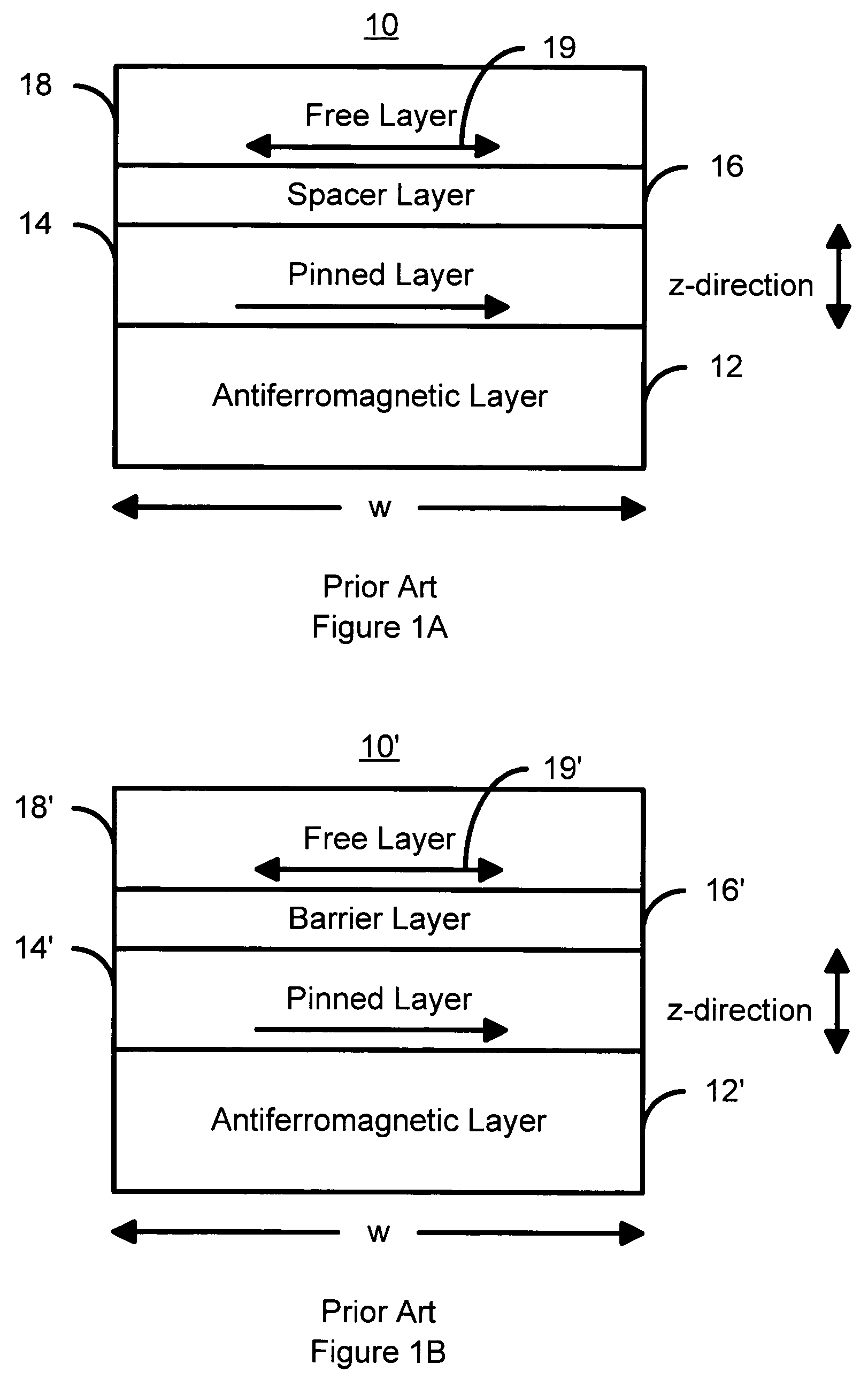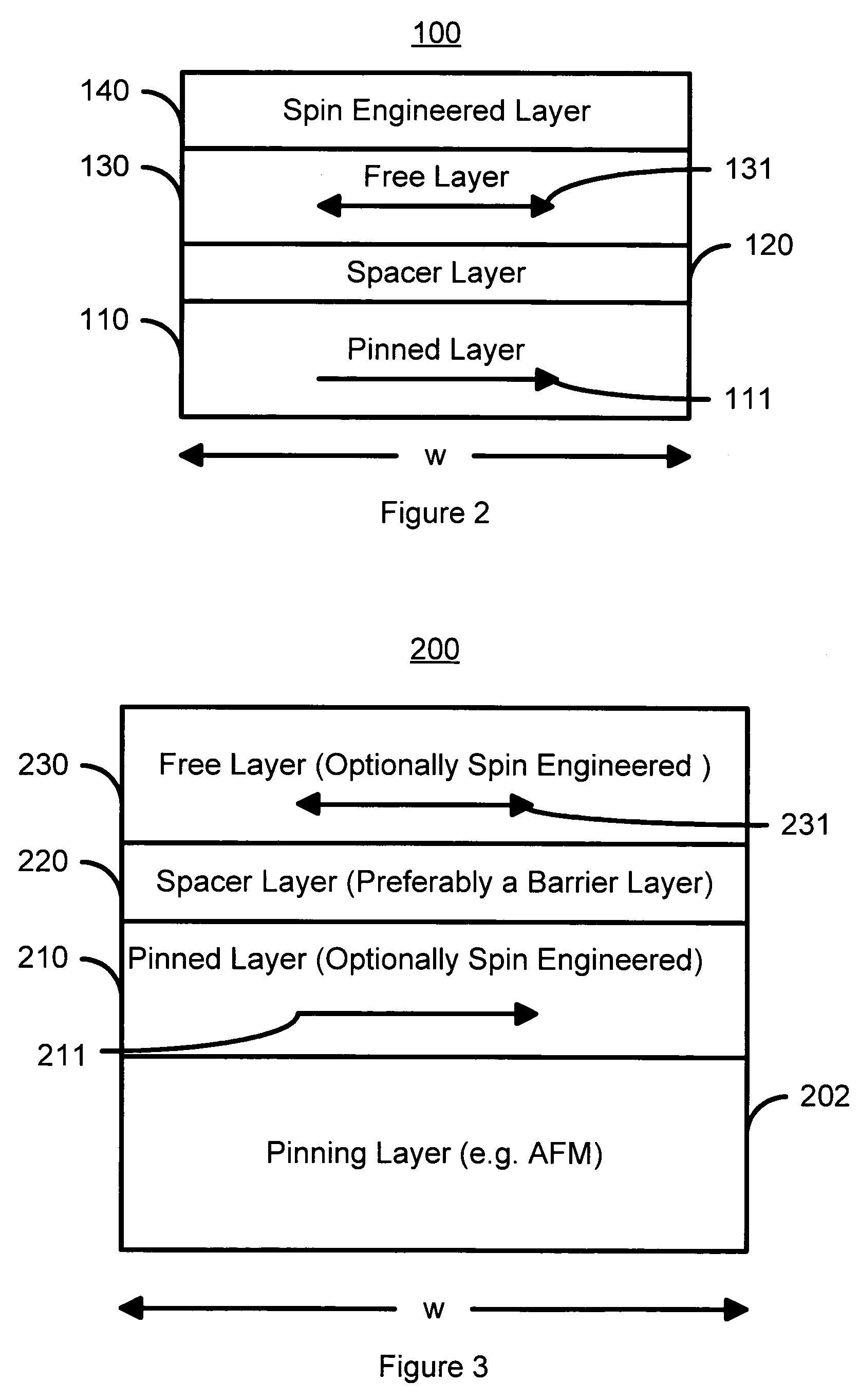Magnetic elements with spin engineered insertion layers and MRAM devices using the magnetic elements
a technology of magnetic elements and mrams, which is applied in the field of magnetic memory systems, can solve the problems of increasing the power consumption of conventional spin transfer based mrams, adversely affecting the utility and affecting the reliability of such conventional magnetic elements, so as to reduce the size of the cell in the mram, improve reliability, and reduce power consumption.
- Summary
- Abstract
- Description
- Claims
- Application Information
AI Technical Summary
Benefits of technology
Problems solved by technology
Method used
Image
Examples
Embodiment Construction
[0028]The present invention relates to magnetic elements and magnetic memories such as MRAM. The following description is presented to enable one of ordinary skill in the art to make and use the invention and is provided in the context of a patent application and its requirements. Various modifications to the preferred embodiments and the generic principles and features described herein will be readily apparent to those skilled in the art. Thus, the present invention is not intended to be limited to the embodiments shown, but is to be accorded the widest scope consistent with the principles and features described herein.
[0029]The present invention provides a method and system for providing a magnetic element. The method and system include providing a pinned layer, a free layer, and a spacer layer between the pinned and free layers. The spacey layer is nonmagnetic. The magnetic element is configured to allow the free layer to be switched due to spin transfer when a write current is p...
PUM
 Login to View More
Login to View More Abstract
Description
Claims
Application Information
 Login to View More
Login to View More - R&D
- Intellectual Property
- Life Sciences
- Materials
- Tech Scout
- Unparalleled Data Quality
- Higher Quality Content
- 60% Fewer Hallucinations
Browse by: Latest US Patents, China's latest patents, Technical Efficacy Thesaurus, Application Domain, Technology Topic, Popular Technical Reports.
© 2025 PatSnap. All rights reserved.Legal|Privacy policy|Modern Slavery Act Transparency Statement|Sitemap|About US| Contact US: help@patsnap.com



